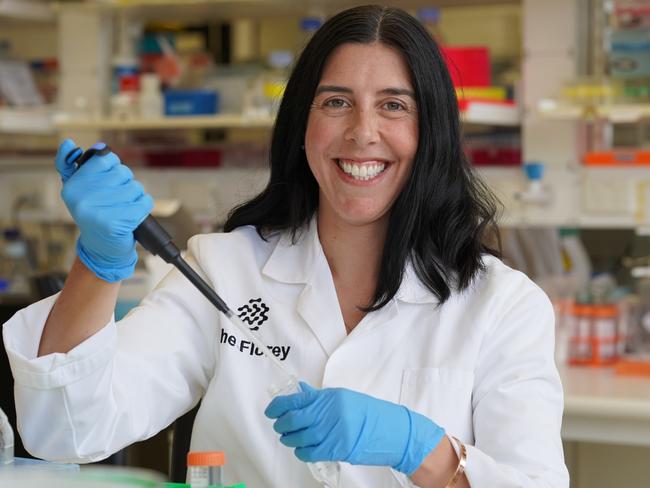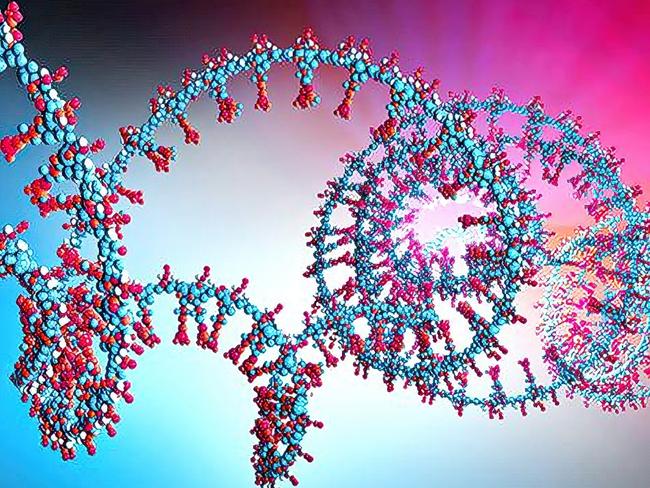How Covid vaccine technology may help in fight against Alzheimer’s
Victorian researchers are harnessing the technology used to make Covid vaccines to develop a possible preventive therapy for Alzheimer’s disease.
Victoria
Don't miss out on the headlines from Victoria. Followed categories will be added to My News.
The same technology that created Covid vaccines is being used by Victorian researchers to develop a possible preventive therapy for Alzheimer’s disease.
A team from The Florey is the first to explore the use of mRNA technology to treat a cause of Alzheimer’s, a toxic protein called tau.
If successful, it may one day be offered as a routine non-invasive injection to stop the disease that is the leading cause of dementia affecting one in 10 Australians over the age of 65 years.
The team’s paper was published in the journal Brain Communications.

Senior author Dr Rebecca Nisbet says The Florey team, that also includes PhD student Patricia Wongsodirdjo, wants to directly target tau to stop it “clumping” together and forming tangles which is thought to cause the disease.
“Everyone has tau in their brain, it stabilises the cell transport system,” Dr Nisbet told the Herald Sun.
“It is an important protein, but in disease it becomes modified and then starts to bind to itself and form tangles in our brain cells.
“We believe what happens in Alzheimer’s disease is that amyloid starts to build up outside our brain cells and this sends a signal that tells tau to misbehave and do the same.
“The onset of tangles aligns really well with when we start to lose our memory.”

The drug Lecanemab, used in America to treat Alzheimer’s disease and under review in Australia, is an antibody created in the laboratory that targets amyloid.
“We have also made an antibody in the lab, but against tau,” Dr Nisbet said.
“Rather than delivering the antibody in its conventional format, which is large and unable to enter the brain cells, we have used the antibody mRNA.”
Dr Nisbet said to picture mRNA like an instruction manual for a drug.
“The mRNA will allow the drugs to get directly into the cells to target tau and stop it forming toxic tangles,” she said.
“This is the first time mRNA has been explored for use in Alzheimer’s disease.”
She says the team is now working with chemists to package the mRNA into nanoparticles that can cross into the brain through the bloodstream.
“We know that our antibody works best as a preventive to stop the tau tangles from forming, but if the tau is already clumping together it won’t help,” she said. “Key will be to stop it happening in the first place.”

Ms Wongsodirdjo says the technique can be applied to any therapeutic antibody.
“We envision that this strategy, when combined with nanoparticle packaging, will enhance targeting of toxic molecules in the brain and improve patient outcomes compared to conventional strategies,” she said.
Dr Nisbet said progress had been made with developing biomarkers in the blood that can help better diagnosis Alzheimer’s disease in the future and give an indication of people developing a build-up of amyloid plaque and tau tangles without expensive brain scans.
She said a combination of therapies then co-delivered after diagnosis will likely be needed to tackle the complex disease.
“It will be best to have a drug targeting the amyloid plaques and also one for the tau tangles,” she said.
Dr Nisbet said while a potential therapy was still some years away, the discovery was offering hope for a disease that sees 50,000 new cases in Australia each year.




